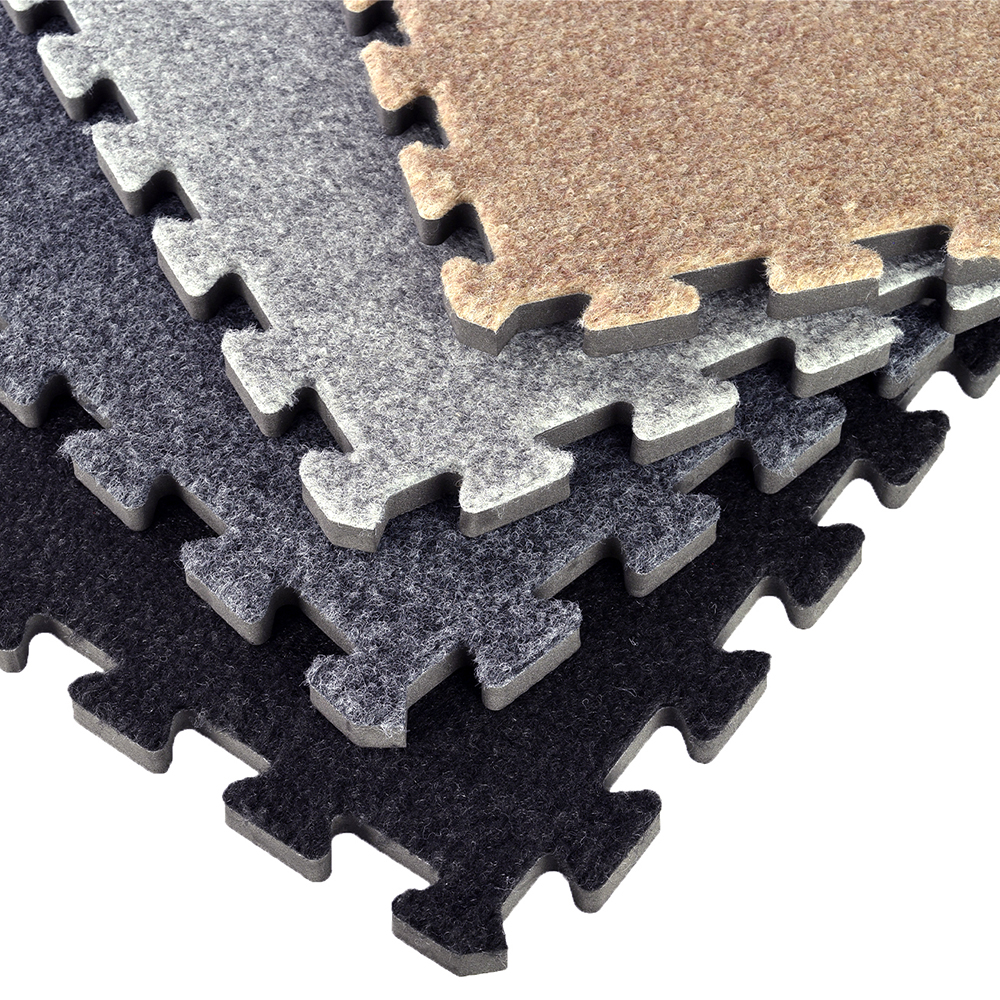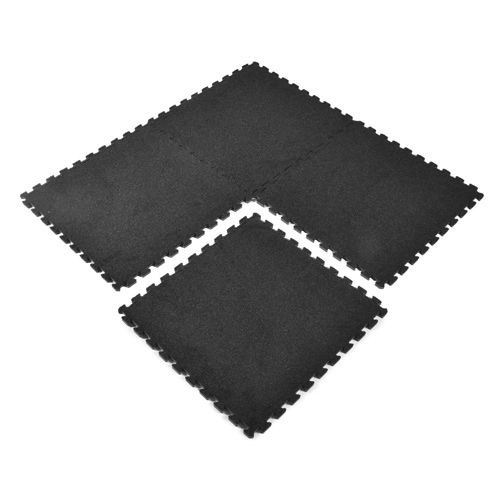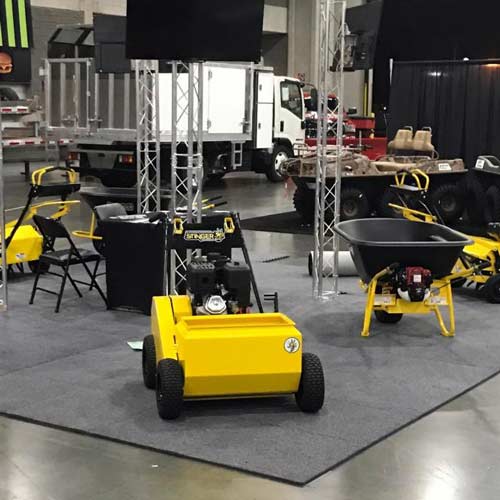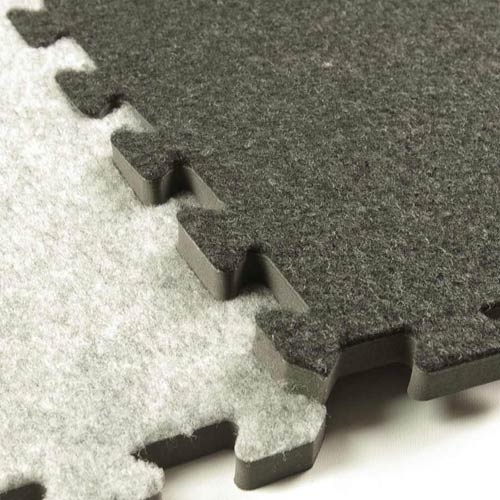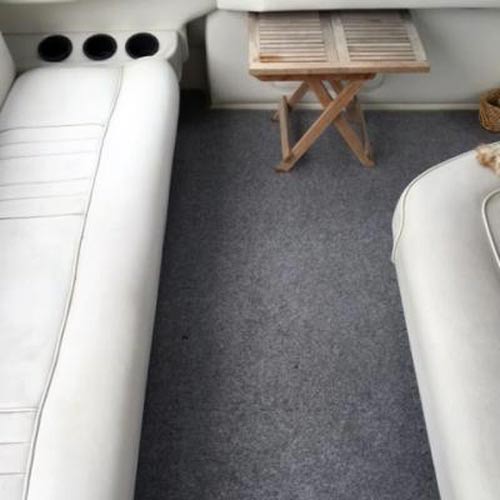Interlocking Padded Carpet Tiles Features & Benefits
Related Product: Royal Interlocking Carpet Tile 5/8 Inch x 2x2 Ft.
The 1/2-inch-thick foam base provides excellent cushion, while the carpeted surface adds style and comfort.
Interlocking padded carpet tiles can provide significant benefits with the same level of warmth as a roll of carpeting but in a modular floor layout.
The Royal Interlocking Carpet Tile is an extremely popular style of flooring. It generates the ease of installation that carpet squares provide without any need for adhesive or peel-and-stick backing, making it great for temporary and permanent installations.
Installers often will choose to lay out these connecting tiles in a residential setting, such as over the top of a cement floor in a basement, home theater, or bedroom.

These also work for trade show booths and daycare facilities. They work well for companies or organizations looking for a temporary or semi-permanent indoor flooring that at first glance looks like a permanent roll of carpet.
Are Carpet Tiles Cheaper Than Carpet?
The Royal brand of interlocking carpet tiles with padding offers a reasonable price point compared to other types of carpeting.The cost per square foot of these tiles is similar to that of a roll of carpet. A cheap roll of carpeting may cost less per square foot than these Royal tiles, but a high-end carpet roll will almost certainly cost more.
These carpet tiles with padding are able to save homeowners and business owners some money versus installing carpet rolls - where those hidden extra costs get involved.
Because of the puzzle-style edges on these tiles, they go together quickly. There’s no need to hire a professional installer, which could become expensive quickly.

The backside of these 5/8-inch-thick tiles includes a padded layer of foam, meaning the padding is part of the tile’s cost. With a roll of carpet, installers must purchase a roll of padded foam separately, adding to the project's overall cost.
Finally, damage to one tile doesn’t mean having to replace the entire carpet layout, as would happen with a roll. If someone spills red wine on a grey tile or burns a hole in it, just replace the single tile, which saves significant money.
How Do Carpet Tiles Stay Together?
Each piece of the carpet tile has edges that resemble jigsaw puzzles. The alternating slots and tabs on each tile match those on adjacent tiles, allowing them to fit together tightly without the need for adhesive.Many of the reviews of these tiles list the ease with which they fit together as one of the best reasons to use them.
Once the installation finishes, the pile height in these puzzle-style tiles hides the interlocking edge exceptionally well. With a single-color layout, you may notice some slight variations in color, which is typical for this type of product. This is most noticeable in large, open spaces.
For that reason, many people choose to alternate two different colors, creating a checkerboard pattern in their flooring.
Are Interlocking Carpet Tiles Easy to Remove?
Even though the Royal tiles fit tightly together, they will pull apart easily when it’s time to disassemble them. Installers will not need to add tape or glue to the underside of the tile or on the puzzle edges, which further simplifies disassembly later.Each Royal tile measures 2 by 2 feet and weighs only 1.4 pounds. Their lightweight nature makes them easy to remove and store or move to a new location.
When using them for a trade show booth, installers are able to carry dozens of these lightweight tiles on a cart, in a storage bin, or even just a cardboard box, which speeds up the process of removing the tiles after the trade show and carrying them to the transport vehicle.
What Are Some Other Benefits of Interlocking Padded Carpet Tiles?
The Royal tiles are available in multiple colors, simplifying the process of matching the decor that already exists in a room or matching the desired color scheme for a trade show booth. Color options include:- Charcoal
- Dark gray
- Light gray
- Tan
Because all of the interlocking edges in the different colors use the same pattern, installers can mix and match colors, if desired.
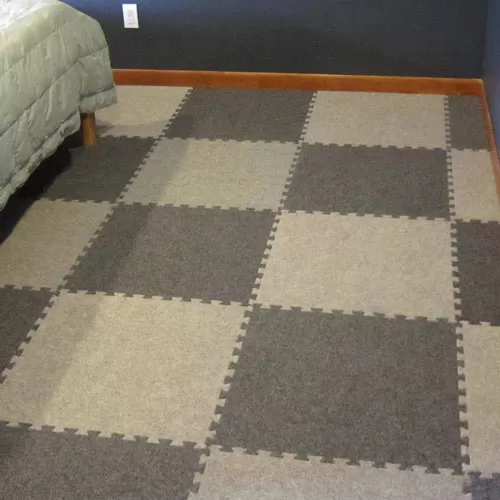
These tiles consist of waterproof materials, so they will not soak up water if used in a location that frequently has some dampness. This could include a basement where moisture seeps through the foundation, a man cave in a garage, or a laundry room.
Should an area with these tiles suffer a flood from a broken pipe or another water disaster, just disassemble and pick up the tiles to allow the subflooring to dry. Stand the tiles on end to allow any extra moisture clinging to the tiles to dry properly.
When these tiles are placed over a firm subflooring, such as concrete, hardwood, vinyl, or ceramic tile, there's no need to lay down extra padding underneath them.
To create a flat edging on these tiles to lay them tight to a wall, installers can cut off the jigsaw puzzle edge.
Each piece also ships with two flat-edge border strips that fit tightly into the puzzle-style edge of the main tile. Installers can use these borders to make a flat edge that’s perfect for an island install or to go against a wall.
When seeking a high-quality carpet tile, the Greatmats team will provide advice on finding the perfect model. Just explain the planned use case, and the Greatmats staff can provide some ideas to fit into almost any budget.
